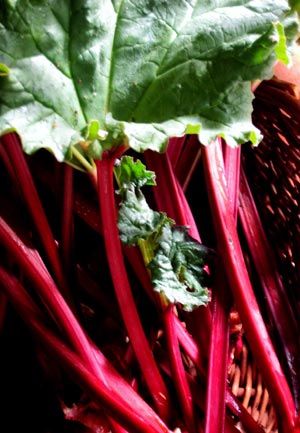|
|
This 2005 report describes the investigation into Rhubarb decline in the Tamborine district of Queensland. This brief project was able to :
Summary : Rhubarb (Rheum rhabarbarum) is a herbaceous perennial of the botanical family Polygonaceae and is believed to have originated from R. rhaponticum (Siberia) and R. undulatum (Asia). Rhubarb is a cool season crop valued for its long thick red stems, which grow from the crown up to 75 cm in length. These stalks are used raw or cooked in sauces, pies and desserts. The stalks have good levels of sugars, fibre, protein, potassium, calcium, magnesium and vitamin C. During the winter months (April to October) the Australian market relies heavily on rhubarb produced in the cooler areas of south east Queensland, predominantly from the Tamborine district, and to a lesser extent from Western Australia. Summer production is centred on the southern States. Queensland and Western Australia each grow about 25 ha of rhubarb, and annual production is estimated as 840 tonnes from Queensland and 575 tonnes from Western Australia. Rhubarb is propagated each year by division of 2-3 year old crowns. Seed is generally not used as it does not produce true-to-type plants and plants are often of inferior quality with green stems. The main characteristics sought by growers are high yield, straight erect, evenly–coloured red stalks of uniform thickness and length and ease of harvesting. Growers have carefully selected their own superior lines over several years and usually bulk up planting material for own use only. Bulking is slow but has generally satisfied the crop cycle of between three and six years. In the last five years, rhubarb crops in the Tamborine area of south east Queensland have developed severe decline. Affected plants have yield reduction, stunting, leaf mottle and necrosis. Surveys and virus assays have shown decline to be widespread and occurring at a high incidence (up to near 100%). There was a high correlation between decline and the presence of viruses in plants, with most plants infected by two or more viruses. Of the viruses detected, only Cucumber mosaic virus has previously been recorded from the species, and in overseas crops. The novel viruses found were a closterovirus, two spherical viruses and a probable potyvirus. The role of each in decline and their possible synergistic or additive effects has yet to be determined. This study has demonstrated that it is feasible to use tissue culture to produce rhubarb free from the virus complex. The tissue cultured plants could be acclimatised and hardened ready for field planting. Plants produced by this process could form the nuclear material for a virus-free planting material scheme. Acknowledgements : This project has been facilitated by Growcom and Horticulture Australia Limited (HAL) in partnership with AUSVEG and has been funded by the National Vegetable Research and Development Levy. The Australian Government provides matched funding for all HAL’s R&D activities. |
||||
|

